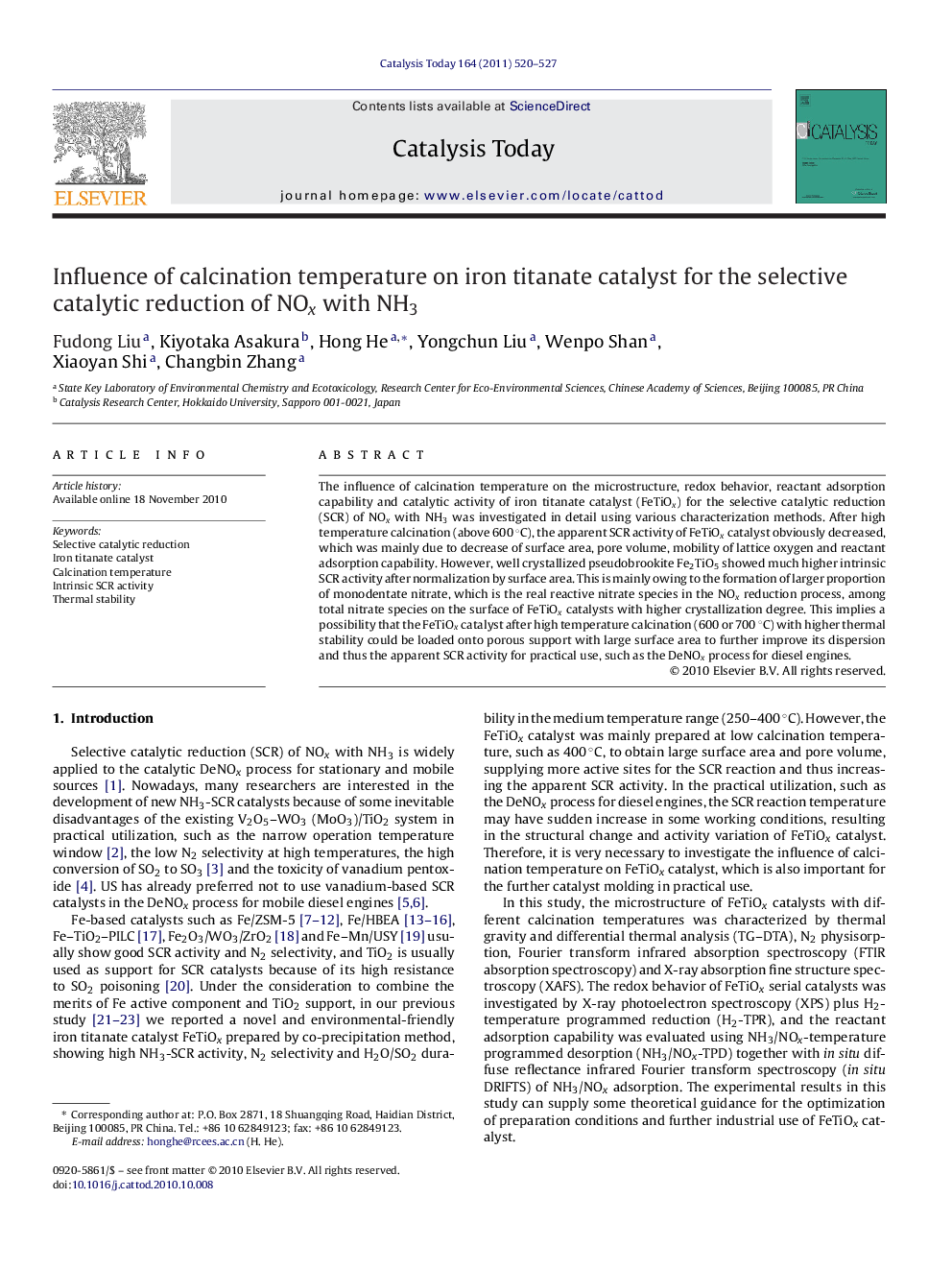| کد مقاله | کد نشریه | سال انتشار | مقاله انگلیسی | نسخه تمام متن |
|---|---|---|---|---|
| 56380 | 47081 | 2011 | 8 صفحه PDF | دانلود رایگان |

The influence of calcination temperature on the microstructure, redox behavior, reactant adsorption capability and catalytic activity of iron titanate catalyst (FeTiOx) for the selective catalytic reduction (SCR) of NOx with NH3 was investigated in detail using various characterization methods. After high temperature calcination (above 600 °C), the apparent SCR activity of FeTiOx catalyst obviously decreased, which was mainly due to decrease of surface area, pore volume, mobility of lattice oxygen and reactant adsorption capability. However, well crystallized pseudobrookite Fe2TiO5 showed much higher intrinsic SCR activity after normalization by surface area. This is mainly owing to the formation of larger proportion of monodentate nitrate, which is the real reactive nitrate species in the NOx reduction process, among total nitrate species on the surface of FeTiOx catalysts with higher crystallization degree. This implies a possibility that the FeTiOx catalyst after high temperature calcination (600 or 700 °C) with higher thermal stability could be loaded onto porous support with large surface area to further improve its dispersion and thus the apparent SCR activity for practical use, such as the DeNOx process for diesel engines.
Journal: Catalysis Today - Volume 164, Issue 1, 30 April 2011, Pages 520–527